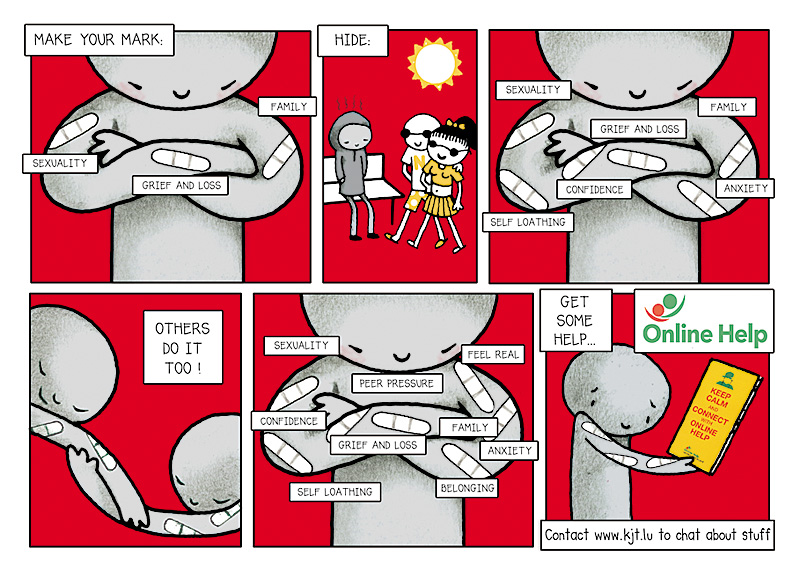The Wounds that Won’t Heal – What Parents Need to Know about Self-Harm
It is hard to understand why your child, or anyone else’s children would deliberately harm themselves. There is a lot of confusion, misinformation and even taboo talking about Self-harm, even though Child Helplines and other support organisations are reporting a steep increase in cases. Self-harm, also called self-injury, self-mutilation or simply cutting, is defined as any intentional injury to ones body. It can also include severe dieting or bingeing. It is most common in adolescence and young adulthood (12-14 years old) however, it can occur at any age.
In the past this behaviour was seen as either ‘a cry for help’ or a suicide attempt which of course it could have been either. Most recently a wider understanding of why people Self-harm defines it as a coping mechanism. Self-harming usually occurs when people face what seem like overwhelming or distressing feelings. The physical pain and sometimes ritual around Self-harming provides temporary relief from feelings such as anxiety, depression, stress or self-loathing. It can also be an act of rebellion as part of the individualising process associated with adolescence. Sufferers may feel that Self-harming helps them to express feelings or release tension, distract them from overwhelming emotions or regain control. They may even feel that Self-harming makes them feel more alive instead of feeling emotionally numb. Some Self-harmers even identify themselves with others and this gives them a sense of belonging.
As parents it is important not to underestimate how tough it can be for children and young people living in a world that never sleeps. New technology means that most of us can be ‘connected’ 24/7. To most teenagers or young adults with portable connected devices this can be a reality. More and more we see the line between online and offline life being diminished. In fact in some circles it is suggested that for young people growing up today there is no difference. This means that our children can be bombarded by information, images and messages at any time and we as parents have little control over what they are being exposed to. Parental controls aside our children can come across, or receive chat, text or pictures day or night that can be confusing or upsetting. If a child is being targeted or bullied it can be increasingly difficult to detect.
During adolescence and young adulthood it is normal for our children to want to fit in or conform to their peer group i.e. what kids of their age are doing all over the world. Often this can lead to comparisons and sometimes confusion around their newly emerging identity. At this time also, when they are going through big physical, mental and emotional changes, our expectations as a society change. We often expect them to take on more responsibility, to think about their future, to act more like adults. All this can take lead to feelings of not being able to cope.
There are some warning signs that a child or young person maybe Self-harming which include unexplained wounds, cuts, bruises or burns. Finding sharp objects such as razors, knives, needles or shards of glass in a person’s belongings or the frequent reporting of ‘accidents’ that may be blamed for causing injury. Often cutting or other injuries are hidden by clothes, and your child might insist on covering up with long sleeves even in hot weather. Changes in mood and needing to spend long periods in isolation, especially in the bathroom may also be a sign.
The best thing we can do as parents is to be open about the possibility of our child or someone else’s child may be Self-harming. We need to talk to our children and encourage them to talk to their friends about this issue. It is increasingly important that we challenge the taboo about talking about Self-harming, depression and suicide amongst children and young people.
The KJT Online Help Service provides support for parents and young people who need information, advice or support around this or any subject of concern. The service is confidential and anonymous and anyone can use it for free by contacting www.kjt.lu. Please encourage children and young people to try out the service, this is an important part of them learning about where to get help if they need it in the future. The service is running a publicity campaign in schools and other places where young people meet. This month’s theme for their postcard campaign is Self Harm.
Article by: Lynn Frank who is a coordinator for Passage.
Last updated: Wednesday 15th March, 2017

